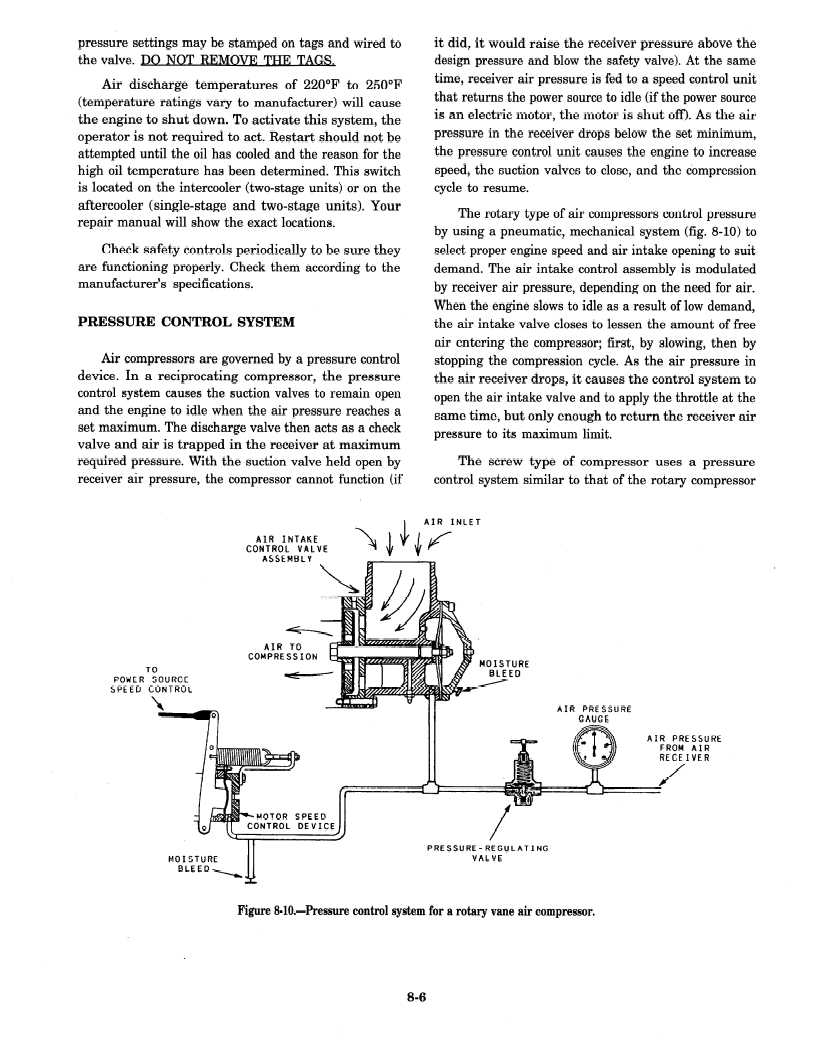pressure settings may be stamped on tags and wired to the valve. JIO NOT REMOVE THE TAGS.
Air discharge temperatures of 220°F to 250°F (temperature ratings vary to manufacturer) will cause the engine to shut down. To activate this system, the operator is not required to act. Restart should not be attempted until the oil has cooled and the reason for the high oil temperature has been determined. This switch is located on the intercooler (two-stage units) or on the aftercooler (single-stage and two-stage units). Your repair manual will show the exact locations.
Check safety controls periodically to be sure they are functioning properly. Check them according to the manufacturer's specifications.
PRESSURE CONTROL SYSTEM
Air compressors are governed by a pressure control device. In a reciprocating compressor, the pressure control system causes the suction valves to remain open and the engine to idle when the air pressure reaches a set maximum. The discharge valve then acts as a check valve and air is trapped in the receiver at maximum required pressure. With the suction valve held open by receiver air pressure, the compressor cannot function (if it did, it would raise the receiver pressure above the design pressure and blow the safety valve). At the same time, receiver air pressure is fed to a speed control unit that returns the power source to idle (if the power source is an electric motor, the motor is shut off). As the air pressure in the receiver drops below the set minimum, the pressure control unit causes the engine to increase speed, the suction valves to close, and the compression cycle to resume.
The rotary type of air compressors control pressure by using a pneumatic, mechanical system (fig. S-10) to select proper engine speed and air intake opening to suit demand. The air intake control assembly is modulated by receiver air pressure, depending on the need for air. When the engine slows to idle as a result of low demand, the air intake valve closes to lessen the amount of free air entering the compressor; first, by slowing, then by stopping the compression cycle. As the air pressure in the air receiver drops, it causes the control system to open the air intake valve and to apply the throttle at the same time, but only enough to return the receiver air pressure to its maximum limit.
The screw type of compressor uses a pressure control system similar to that of the rotary compressor

Figure 8-10-Pressure control system for a rotary vane air compressor.
Continue Reading